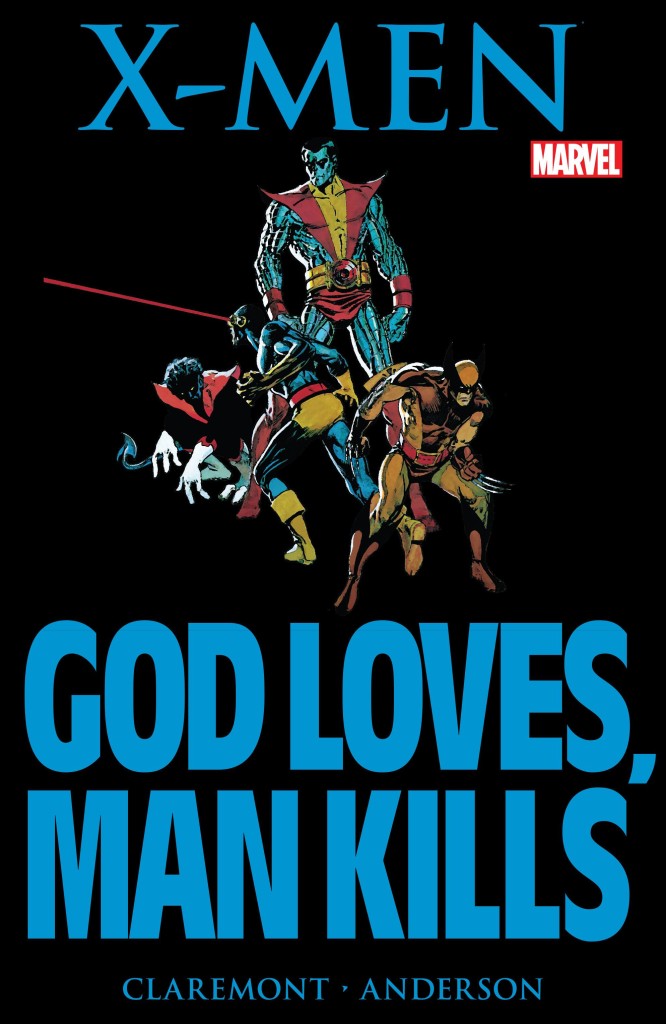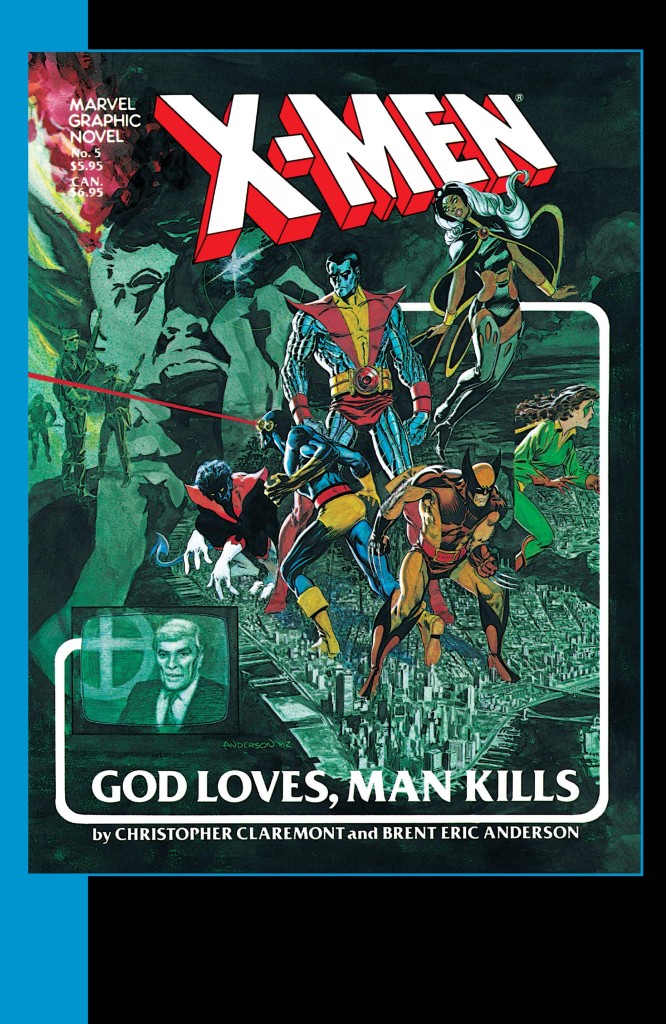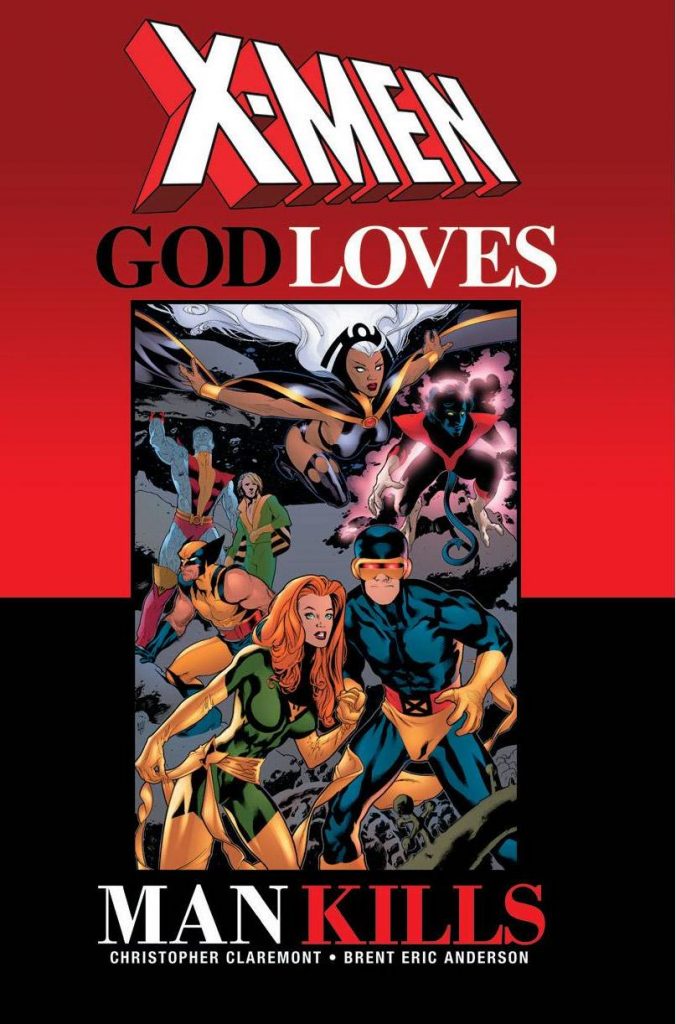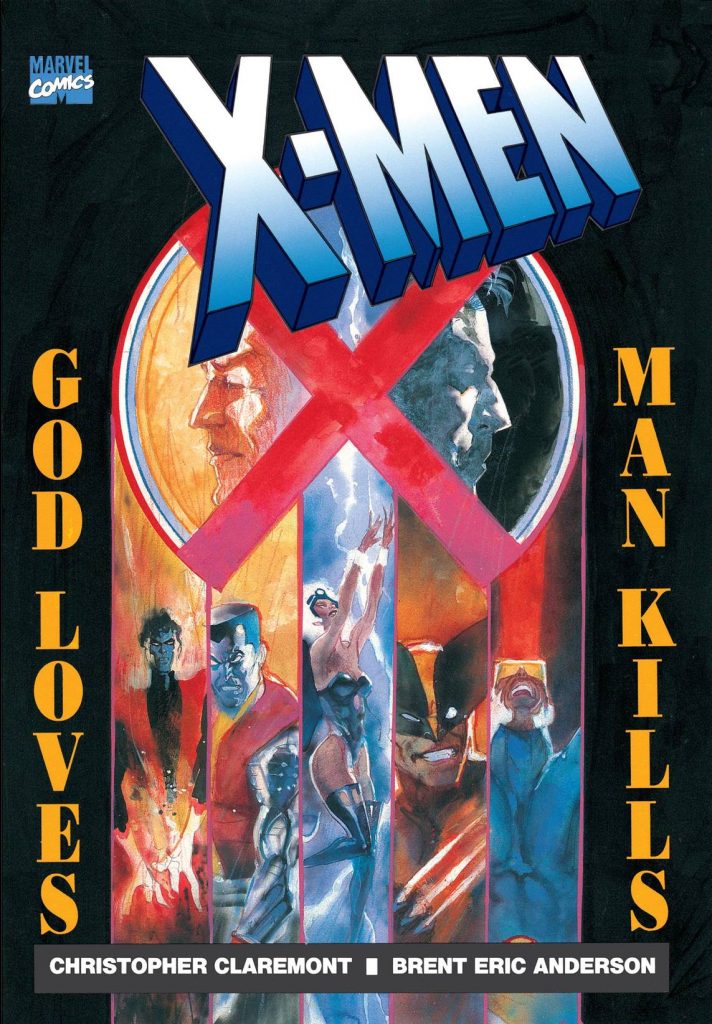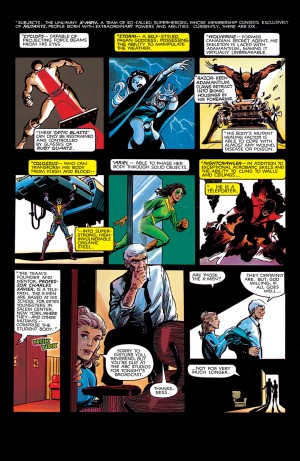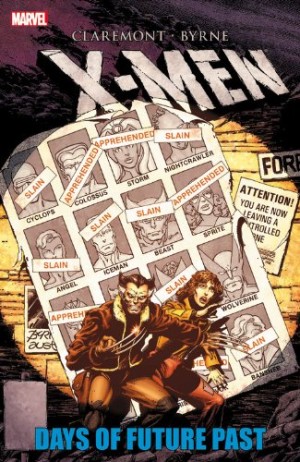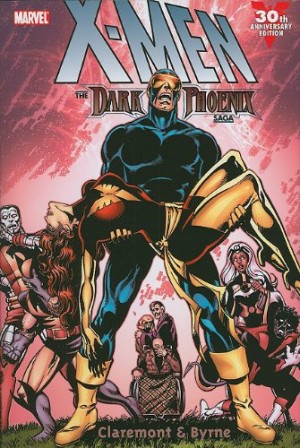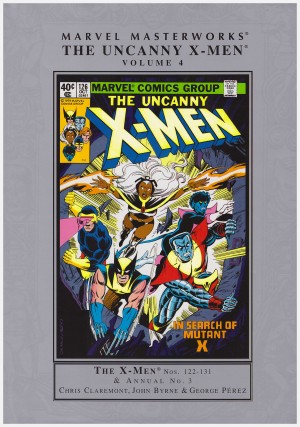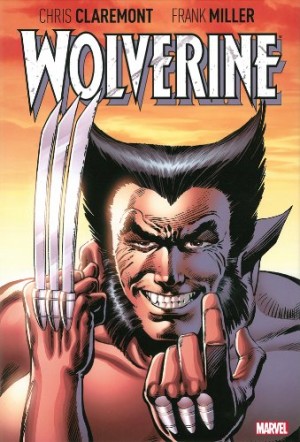Review by Jamie McNeil
A first glance at God Loves, Man Kills might fool you into thinking it’s an out of date, non-descript experimental graphic novel from a bygone era. Except it’s never been out of print, inspired director Bryan Singer’s X2 movie, and was popular enough to beget a sequel (God Loves, Man Kills II).
The charismatic Reverend William Stryker, founder/leader of Stryker Crusade, preaches what he believes to be the literal interpretation and application of the Bible to the masses, having the ear of the common and privileged alike. He stokes the fires of anti-mutant feelings, believing them corruptions of the devil, even publicly debating Charles Xavier. Meanwhile mutants are mysteriously being hunted down, the X-Men themselves becoming targets of people who will stop at nothing, even using their own powers to eradicate mutant-kind.
Written in 1982, God Loves, Man Kills is set against the growing conservatism of early 1980s America spearheaded by the influence of media conglomerates owned by televangelists, and there are aspects that have not aged well. Chris Claremont’s dialogue can be overly verbose, characters prone to monologues justifying their actions. On the other hand writer Claremont and artist Brent Anderson hook you from the start with some shocking opening scenes. Anderson uses blue hues and black shadows to create a phenomenally eerie atmosphere fraught with fear and tension. While his facial features can be out of proportion and actions like flying and running can seem clumsy, he makes full use of cleverly arranged frames that range from the very simple to the very detailed to tell the story. What results is really quite beautiful. Claremont’s observational powers and method actor’s approach to crafting his characters means they have depth to them, relatable and familiar as people we know, their emotions present and palpable.
For newer readers, the religiously fundamental antagonist may come across as unrealistic. Now a theme that has been done to death in one form or another, in the climate of the time it was a fairly brave thing to do. Televangelist Jimmy Swaggart appeared on 250 channels, Jim and Tammy Bakker had a faith-based theme park that generated millions, and Jerry Falwell (who Stryker is based on) had a number of media outlets, called for a crackdown on the abomination of homosexuality, and supported war on ‘evil’ foreign regimes. Impressively, Claremont doesn’t paste all Christians with the same brush, instead using Nightcrawler’s contemplative Catholicism and Kitty Pryde’s social activism to contrast Stryker’s ‘moral’ superiority. While Stryker’s character is highly fictionalised, his personality and role as a church leader is almost unbelievably realistic. Don’t buy it? Then pay a visit to websites serving as recovery groups for people who were raised in Evangelical churches. They could tell you similar stories of how their parents were brainwashed to give away life savings or adopt extreme parenting methods labelled as ‘biblical’ to the detriment of their children.
God Loves, Man Kills has a strong moral element, with observations on fear-based religious fundamentalism that have proved prophetic when you consider the current effects on Islamic traditions. This has arguably added to its longevity, making it one for the shelf. It’s available in paperback or hardcover at various prices, though digital versions are the best value for money. God Loves, Man Kills stands on its own chronologically but is also collected in The Uncanny X-Men Omnibus Vol. 3, Marvel Masterworks: Uncanny X-Men Vol. 9, and X-Men: The Adamantium Collection.
